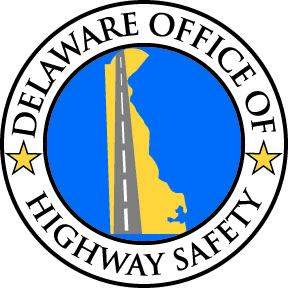Halloween is hauntingly around the corner. While it is known for its fun, costumes and candy, Halloween can also be a little scary for parents and pet owners – but it doesn’t have to be! The Delaware Division of Public Health (DPH) offers health and safety tips for a safe and fun celebration this Halloween.
“Creep” It Healthy with These Treats
Halloween can be a fun and exciting holiday for people of all ages, but it can also be difficult to stay on track with healthy eating habits. To help satisfy a child’s sweet tooth, consider opting for healthier and commercially wrapped alternatives such as:
- Mini bags of fresh fruit and vegetables such as apples, raisins, grapes, carrots, or celery.
- Mini bags of dried fruit or vegetable “chips.”
- Squeeze fruit, fruit chews, or fruit rolls.
- Mini bags of trail mix made with whole grain cereals.
- Peanut butter in single-serve containers.
- Individually packaged granola, cereal, soy, yogurt, and fig bars.
- Mini bags of pretzels, animal crackers, mini rice cereal or granola bars, or whole grain cheddar cheese crackers.
- Small bottles of water.
- If candy is served, choose bite-size candy bars that are lower in fat and sugar.
- Non-food treats like pencils, crayons, glow sticks, or bottles of bubbles.
Remember: Whether it’s candy or a healthy sweet snack like fruit, after the snacking is done, grab your toothpaste and toothbrush. Moderation is also key when it comes to indulging in Halloween treats. You can still enjoy the occasional candy or cookie but try to limit your intake and practice portion control.
Stay Safe with These Tricks
As fun as Halloween can be, there are some traditions that can be a bit dangerous as well. For the safety of all Halloween participants, follow these tips:
- Parents should walk with their children when trick-or-treating and stick to familiar neighborhoods. Do not let them go alone. Teach children never to go into strangers’ homes or cars. In case young children become lost, put a nametag with two phone numbers on their costumes. Children should know their home phone number and how to call 911.
- Choose light-colored costumes that are labeled “flame-retardant,” meaning the material will not burn. Decorate costumes and bags with reflective tape or stickers and, if possible, choose light colors. Since costume masks can sometimes obstruct a child’s vision, try non-toxic face paint and makeup whenever possible. Make sure all costumes are appropriately sized to reduce trip and fall hazards.
- At home, turn on outside lights and remove any tripping hazards.
- Walk on well-lit sidewalks and driveways with flashlights. Use crosswalks and never assume that vehicles will stop for pedestrians. Insist that trick-or-treaters walk, not run or ride bicycles at night.
- Teens and adult drivers should learn what day and time your city/town is holding trick-or-treating hours and be especially alert for children during these times.
- Avoid candles and other flames.
- Stay away from unknown or unattended pets.
- Before eating any candy or treats, inspect them carefully to ensure they are safe to consume. Discard treats that are unsealed, have holes in the packages, are spoiled, or are homemade treats that were not made by someone you know. To prevent choking, do not allow young children to have hard candy or gum.
Finally, let’s not forget Halloween safety for our pets: Halloween can be stressful for pets. Doorbells ringing and strangers coming to their doors make some pets very anxious. All but the most social dogs and cats should be kept in a separate room away from the front door during peak trick-or-treating hours.
- Candy can cause illnesses, vomiting and diarrhea in pets. Make sure you keep candy in a safe place out of your pets’ reach. Don’t let your children “share” their Halloween treats (especially chocolate) with the family pet.
- Pet costumes are cute, but make sure it’s a good fit for your animal. Make sure the costume does not limit his or her movement, sight or ability to breathe, bark or meow. Check the costume carefully for small, dangling or easily chewed-off pieces that could present a choking hazard. If you put it on and your pet seems overly anxious, then it’s best to let them be their glorious selves.
- Make sure your pet is properly identified (microchip, collar and ID tag) in case it escapes through the open door while you’re distracted with trick-or-treaters.
- Keep lit candles and jack-o-lanterns out of reach of pets.


 About the Delaware Office of Highway Safety
About the Delaware Office of Highway Safety